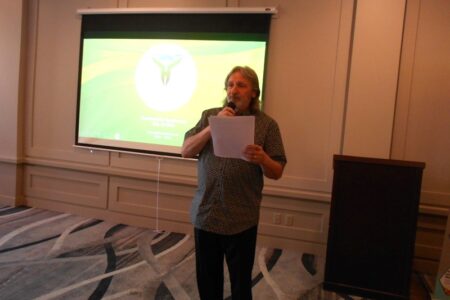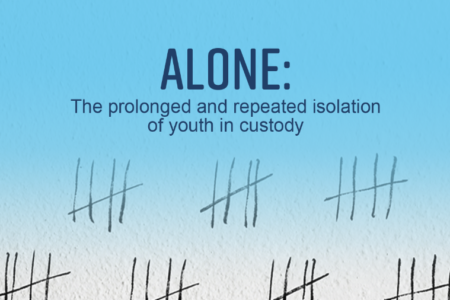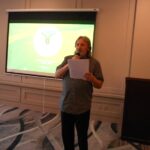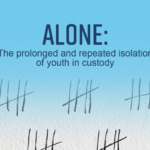The changing face of schooling. Rosslanders hear from two successful small town K-12 school
On Tuesday evening, just over 80 people took to the RSS Gym bleachers for Round One of a scheduled two round fight this week to maintain K-12 education in Rossland. Local parents, teachers, residents and supporters as well as special guests from Kaslo and Crawford Bay schools were on hand to cheer on the efforts of the Neighbourhoods of Learning (NOL) group.
In preparation for Round Two which will be hosted by School District 20 tonight, 24 hours after the NOL meeting, the first punches thrown were ones of empathy, research, understanding and pride of community and region. The peaceful first round was an impressive showing and demonstration of the work that has been going on behind the scenes of social networking campaigns and oversized novelty buttons.
The NOL board has made significant progress regardless of the seemingly upstream path of pushing a concept to the school board; a board which in its four highest ranked scenarios for school facilities in the district all included closing RSS.
The recently submitted proposal by the NOL committee was presented to the crowd. It outlined the potential setup of a K-12 school in RSS. The preferred setup would see K-12 moving to a renovated RSS and the Maclean school site becoming a community learning centre, potentially shared with Ecole de Sept Sommets and other community groups as well as maintaining the Strongstart program on site.
Moving to a K-12 format, RSS would receive minimal renovations to make it compatible with the needs of younger children. The estimated renovations would cost around $400,000. The group cautions, however, that they don’t want to spend too much money on renovating the old RSS as that would potentially move them down the priority list for a new school build by the province. The longer term hope is that after establishing a solid K-12 school in the old RSS, that the province would jump on board with the construction of a new K-12 school.
Initially, the first floor of the RSS classroom wing would be converted to a kindergarten to grade two area. The second floor would be renovated to house intermediate students from grade three to seven. Secondary students would be accommodated on the third floor.
To make the setup work, ideas such as mobile computer labs that don’t require a dedicated classroom could be initiated. Other ideas could involve staggered scheduling with different start, lunch and end times for different grades. Things such as green play spaces for the younger children would also need to be developed on site. One thought would be grassing the quad on the North-east side of the building currently used for parking and using that as a play area.
The NOL committee made a strong and confident pitch, stating the major reasons why the current facilities report is flawed. From improper weighting of criteria to too many criteria or certain key criteria such as community impact of closing schools being left out, the NOL people have picked numerous holes in the Planning for the Future Facilities Report and don’t believe it to be a sound document.
One of the concerns with the plan was its criteria scoring in which schools with more kids were assumed to have more learning opportunities. This point was challenged and refuted with real life examples for the remainder of the evening.
The overriding theme of the night was one of optimism and high spirits as speakers spread their message of small schools being better, friendlier and more successful learning centres than large schools. The NOL’s preferred scenario of converting RSS into a K-12 school was backed up by at times moving presentations by the principals of Crawford Bay and Kaslo schools, both K-12 facilities.
Putting Rossland’s enrollment numbers in perspective, Dan Rude of Crawford Bay School has been dealing with how to maintain a secondary school program vibrant in the school with roughly 30 kids. For Crawford Bay, the answer has been a full integration of the school as the hub of the community, hiring creative/innovative teachers and staff, using the expertise and talents of both teachers and locals to provide a high level of education for children within the community.
“The main point is how we look at learning opportunities and experiences. One of the big things we’ve done is really look at the community and getting out beyond the school walls,” Rude noted.
Among the creative approaches taken to school in Crawford Bay has been a community mentor program. Each grade 10, 11 and 12 student is partnered with a community member on a learning project, supported by their teachers.
“It’s about looking for creative and innovative ways to develop learning experiences without having more students in the same classroom, doing the same thing at the same time,” added Rude.
Expanding on the idea of the deeper need to revamp our overall education system into something that fosters creativity and confidence among students was backed up with a video presentation by Sir Ken Robinson, world-renowned education and creativity expert and recipient of the RSA’s Benjamin Franklin Award that digs down to the core values and issues behind the education system that require change (as seen above).
Involvement with the community and the development of a tight community within the school are the two major benefits that come from the K-12 setup as experienced by Dan Myles, principal of J.V. Humphries School in Kaslo.
“One of the fabulous things about K-12 is the sense of responsibility and community it develops between the students of all ages. We foster that interaction on purpose. We have grade 12 peer helpers that help the grade two’s zip up their jackets. We have grade 10s who present their science projects to the grade fours and the grade fours love it.”
Myles added that contrary to what he saw as principal of an intermediate school, he has zero incidents of inter-age bullying at the Kaslo School.
“We are a community within the school and we work together,” added Myles.
That sense of belonging appears to have hit home with the students as well. Myles recalled one story in which he was chatting with a student who had recently move to Kaslo from a school of 2,200 kids in Nanaimo and asked her if she would rather be at JV Humphries or another school if she had the choice.
“She told me, while Nanaimo had all of the opportunities in the world, she was lonely, isolated, no one knew her, the teachers didn’t know her name and she sat in the hall she said because she was concerned about what she looked like. She told me, in Kaslo everyone says ‘hi’ and she can have pink hair or whatever because people know her and care about her at JV Humphries.”
The message of small schools being worth fighting for and even preferred to larger schools added together with an overview of the top scenario for K-12 education in Rossland by NOL is hoped to provide solid background information to participants that they can bring to Wednesday night’s meeting.
Back in the RSS gym from 6:30pm onwards, School District 20 will be holding a Planning for the Future – Community Focus Group in which to gain input from the people of Rossland to get our feedback and ideas on education in the area.
“If this is what is in our best interest, what we need to do is tip those trustees over,” said Robin Hethey, closing out the meeting. “We need to talk to them tomorrow night and into the future. We need to convince them that this is what the committee wants; these are our wishes. Yes they have our proposal. That’s from ten people. Now we need the community to speak. What is our future? What do we want to do? So let’s tip.”
View the full NOL proposal here






















